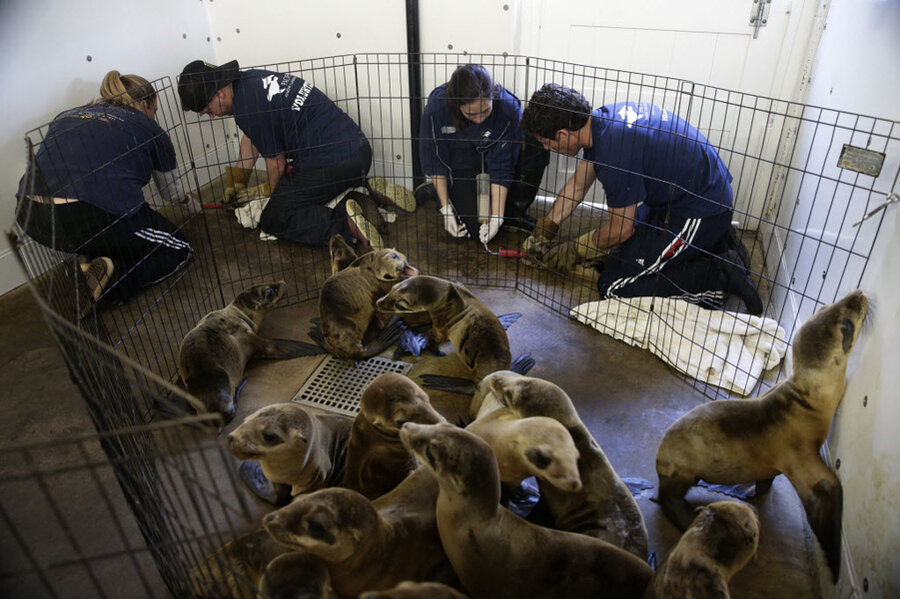Sea lion pups washing ashore in California test capacity of rescue network
Loading...
| Los Angeles
Once again, sea lion pups in dire straits are washing ashore in record numbers up and down the California coast.
The last time this deluge of pups occurred, in 2013, the National Oceanic and Atmospheric Administration dubbed it a UME, or unusual mortality event. But this year, the numbers are far worse. The number of rescues along the California coast so far this year is already 1,650, compared with some 1,400 for the entire year two years ago.
Individual facilities are being overwhelmed as more pups wash ashore. The Pacific Marine Mammal Center (PMMC) in Laguna Beach has a normal capacity to care for some 125 animals in distress. This winter, 285 have come to them – more than twice the 135 seen in 2013. SeaWorld has suspended its sea lion show to aid in rescue efforts. The theme park has constructed two new temporary pools to house some 400 pups taken in since January.
It is not entirely unusual for sea lion pups to wash ashore, but they don't usually start appearing until April and May, and never have they washed up on beaches in such high numbers.
While there are still unanswered questions, scientists point to a few potential reasons for the strandings. “It’s a perfect storm,” says marine biologist Keith Matassa, executive director of the PMMC.
Warmer waters are pushing the natural foods for sea lion mothers farther from shore, forcing the nursing sea lion moms to forage up to eight days away from their offspring, rather than the more normal four days. And pups are pushing into the waters to forage for themselves before they are capable of such independent feeding. On top of that, the currents have shifted, Mr. Matassa says.
“We are in defensive mode,” he says, ever since January when the pups, most born in mid-2014, began to appear dehydrated and seriously underweight on California shores. The PMMC normally has some four or five volunteers helping out with sick animals, but now has more than a dozen.
As the many facilities up and down California’s coast struggle to feed and restore the young mammals to enable them to care for themselves, many observers suggest such challenges are warning bells, signaling larger crises. While it is not possible to trace a single event to global warming or climate change, “the overall trend line is clear,” says David Helvarg, environmental activist and author of “The Golden Shore: California's Love Affair With the Sea.”
“We are seeing dramatic changes,” he says, with warming from Alaska down to southern California's Channel Islands. He points to the largest seabird rookery south of Alaska, where the bird boxes built for study had to be changed because of the heat. “They were overheating and killing the birds,” he says. Also, the changing ocean temperatures are changing food patterns for the birds.
The larger message of these events, Mr. Helvarg says, is that the oceans are in trouble. California has led the way in responding to global warming, he argues, including placing limits on carbon emissions. “But you can’t fight a global problem from one state,” he says, adding that it will take global action to fight such problems as the acidification and overall warming of the ocean.
YouTube videos of the tender-eyed sea lion pups have brought global attention to their plight. At the same time as the team at PMMC has been fielding calls to pick up sick pups from beaches and parking lots where they have wandered, it is also taking requests for interviews from as far away as Canada and China.







